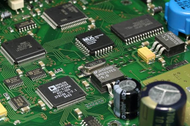Everything You Need To Know About PCB Stencils
Posted by Staff - Soldertraining on 4th Jan 2022
Printed circuit boards (PCBs) are the core component of any electronic device. It forms the essential building of your modern electronic equipment. The complexity of PCBs is increasing as technology is getting more advanced. The minute components are placed together on the board and connected logically makes the device functional. These components are attached to the board with solder paste. The solder paste deposition on the board can be done with various methods. Stencil printing is commonly used for PBC fabrication and manufacturing.
What is Stencil Printing?
Stencil printing makes use of a stencil to apply solder paste. The stencil PCB is prepared using the CAD drawing of the concerned PCB design. The stencil consists of minute apertures according to the PCB's surface mount components for practical and efficient deposition. Solder stencil helps release the exact solder paste quantity to maintain precision across the board.
Any error in the PCB assembly process can affect the product's functionality and quality. To flawlessly deposit solder paste, you can use the PCB stencil to ensure the effective and accurate release and optimize the PCB's mechanical strength and electrical connections. Stencils are of two types: the framed and the frameless. Frame-less are cheaper and easier to store, but framed stencils are preferred for high-volume printing. The stencil structure is set within a frame, making it very sturdy.
The industry uses the following technologies to make PCB stencils
Laser-cut
Electroformed,
Chemically etched, and
Hybrid (combines chemical etching and laser-cutting technologies).
The purpose of the PCB Stencil is:
Precise application of material (solder paste, glue)
Depots creation of required shape and size
Print reproducibility
Effective cleaning of the pads
Economy
Critical elements of the stencil design
Stencil thickness determines a stencil's capacity to release solder paste. The thickness must adhere to aperture size. Otherwise, you will not get the required solder joint.
Aperture design significantly impacts solder joints. Inconsistent apertures can lead to various defects like bridging and solder beads.
A stencil must have PCB specific design to ensure an effective stenciling process. PCBs with copper pads cannot use a stencil design without copper pads, which would otherwise lead to copper lifting and poor soldering. Adding a 'window effect' to the aperture design helps eliminate various defects by moderating the solder volume.
Factors That Determine Stencil Thickness
Aspect Ratio: Stencil thickness determines the solder paste's quantity and height that form a solder joint. The lower the amount, the disconnection possibility maximizes. The correlation is known as 'aspect.' The aspect ratio is the width of the aperture divided by the stencil thickness. Aspect ratio = W/T.
Area Ratio: The area ratio is the area of the aperture opening divided by the area of the side walls. Area ratio also affects a stencil’s paste release capacity.
QFP and BGA Pitch: When considering stencil’s thickness, you need to consider the stencil’s fine-pitch QFP, BGA, and smallest chip size. BGA of ball pitch 1.0mm + requires a stencil thickness of 0.15mm. For pitch between 0.5mm and 1.0mm, a stencil thickness of 0.13mm is suitable. A QFP whose pitch ≤ of 0.5mm must have a stencil thickness between 0.12mm and 0.13mm. Thickness > 0.5mm needs a stencil thickness of 0.15mm – 0.20mm.
To Conclude:
These are a few things you should know about PCB stencils. It is critical to the success of the printing phase of PCB assembly.

